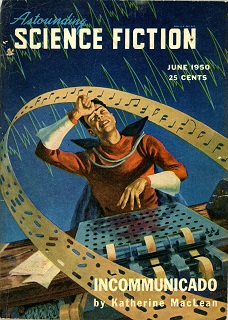
What if radionics was fiction, and Ruth Drown a novelist? Would we be able to say in conversation about radionics, “Read ‘Drown Radio Therapy’ by Ruth Drown,” – where today with the mention of time travel we can say, “Read ‘The Time Machine’ by H.G. Wells,” – and expect that everyone will nod knowingly? Would that make things any easier?
Recently I was in the final stages of constructing a new radionics device when visitors arrived. I couldn’t deny anything; it was on full display and I had a hot soldering iron in my hand. On the table before me was a box with two copper plates, a few wires, circuit board with amplifiers, capacitors and resistors – and a large crystal wound with wire. Naturally almost every person alive in the civilised world today knows that wirewound quartz crystals generally don’t belong in an electronic device. Something distinctly esoteric was going on, I could see the concern reflected in their eyes.
Then there was the awful question: “What [expletive] are you making?!” How do you brush off something like that in 60 seconds or less? I attempted a quick summary of radionics in general, the instrument itself and its inspiration. I was only partly successful. It actually took me about 10 minutes. Fortunately the visitors were polite, if bemused. I was grateful that they didn’t respond with outright hilarity or even scorn, although to be honest I didn’t expect any such reaction, for my friends see me (one may only assume) as an otherwise reasonably sensible person.
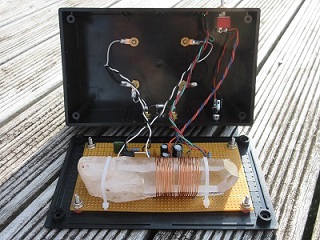
I was forced to admit, however, that I’m a creator of machines that don’t work – at least according to the laws of physics.
And I like it that way. I’m fascinated by mystery. I muse on unknowable things. If someone were to present me with chapter and verse on exactly how and why something works (or doesn’t, or won’t) that’s not necessarily what I’m seeking. That’s simply deflating. It’s not so much a certainty that I enthusiastically pursue, but the excitement of exploring the boundaries of possibilities. The sense of wonder is an end in itself. Wonder is to allow yourself to fall into the infinity of chaos, that “place” which gives birth to everything.
Order and certainty is limited by definition. When surety is abandoned, chaos and infinite potential are revealed as the background of existence. Creation takes birth there. The behaviour of the goddess Erin reveals that truth, instead of being found in order, is to be found in chaos. Shiva, Mahadeva, the great untamed deity, is the primary source; once everything is destroyed, pure consciousness is the soil for the seed of creation, order and insight. Entropy is the ground of life.

You can see where I’m going with this: This is the mud where lotuses bloom; this is the dimension where radionics works.
Life encountering chaos and confusion goes counter to universal entropy, forming knowledge and order out of unknowable constituents, thoughts, imagination. This is the basis of Myth (capital “M,” thank you Joseph Campbell) revealed in such stories as the Creation in Genesis. We imagine, we express our intention, thus we create. Imagination is the first creation of chaos.
In “Conversations with God” Neale Donald Walsch pointed out that God reveals himself in every way, even through our imagination. Albert Einstein observed that imagination is more important than knowledge, for knowledge is limited by its own boundaries. Knowledge is bound by certainty. Einstein pointed out that imagination is boundless, spread out through the universe.

Dogma is blinded by its own light. A little bit of truth has the danger of becoming viewed as the whole reality. Galileo, Newton, Goethe and innumerable others would not be remembered today if they had stuck to consensus opinion. They stretched the bounds of credibility, often at the expense of their own lives. And no, they weren’t all rational sceptics. Isaac Newton for example, now considered the father of modern science, was an alchemist and a “natural philosopher.” He believed in “woo,” a favourite term of otherwise apparently sane, rational people today. Tesla (name stolen by an elite car manufacturer) was intensely curious about many things that would make any respectable scientist today nervous about his reputation.
I’m in no way going to imply that radionics is at the frontier of a cutting edge, cold blooded science. Unless, that is, we should include the esoteric arts of magic and energy healing in the departments of exoteric science. Radionics exists at the blurry fringe of our imagination. I believe it is more of an artwork on the canvas of consciousness. Radionics is what poetry is to journalism, what jazz is to mathematics. It measures the otherwise unmeasurable quality of life itself, its ephemeral conditions and possibilities. It offers a framework for introspection and intention. It reveals patterns in Nature rather than submitting to formulae and conventions. It dares to ask the question, “What if?”
Radionics is a direct tool of consciousness. Consciousness is unknowable, nonexistent, yet no knowledge of existence is possible without it. Hence whatever exists in consciousness – tangibly, imaginary or otherwise – exists. In consciousness an idea has the same reality as, say, a machine. Whatever arises as a consequence of consciousness has an effect in consciousness. This, I believe, is the world of radionics.
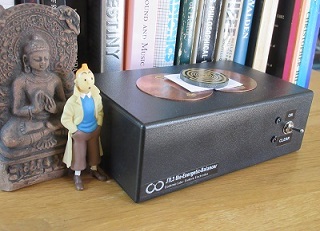
“The world is given to me only once, not one existing and one perceived. Subject and object are only one.” (Erwin Schrodinger)
One of my visitors returned a few days later, and she asked how I was going with my radionics instrument. It was sitting beside me, switched on, LED glowing, otherwise motionless. As I was chatting to her about it, it then occurred to me how my radionics instrument lives in my imagination in the same way that a work of fiction lives in the imagination of an author and her readers. The mind of the author creates a universe, forms a world and breathes life into its characters, which take on a life of their own. Similarly the vision of my instrument is alive in me – I understand precisely its design, how it functions, the laws or principles by which it functions, the dimension of the universe with which it is designed to interact, and its potential effect which might be seen as a gateway between levels of reality.
So in conversation we explored and compared the two creations that arise in the imagination of the radionicist and the novelist.
At this point I assumed that there is an unreasoned (thus unreasonable) disparity in the minds of most people between a radionics instrument and a book, a work of fiction. I say unreasonable because the reality is that each one has taken birth in the imagination of its creator, ultimately taking tangible form – on one hand an instrument in the hands of an operator, and on the other a book in the hands of a reader. Each lives, so to speak, through its creator first of all, and secondly through the user or reader.

“The imagination, like certain wild animals, will not breed in captivity.”
I suppose the materialist of this world might hasten to heap scorn and ridicule on the invention and use of a radionics instrument, simply because it is a physical device that doesn’t appear to have a direct physical effect the way that a machine is expected to. Think of the way an excavator or an oscilloscope works, for example. Never mind that the radionics instrument is modifying reality in many ways, not least in the mind of the operator (also part of the totality of reality, strangely enough). This latter point, curiously, is frowned upon by those who choose to view the world itself as a physical device, the mind thus being a modification of that material structure. Okay, so the problem is that the device is mental in concept, of unprovable purpose.

But when we come to a book, the situation is quite different. The book, by contrast, is almost universally permitted to continue creating an alternative reality, despite it being just as much a figment of the creator’s fertile imagination. A sceptic may even enjoy the novel. It may even change his life. The ideas embodied in a novel, for some strange reason, isn’t necessarily a threat to sensibility the way a physical device might seem to be. (Ignoring such books as Noddy, and The Satanic Verses, obviously.) So I may ask: What poses more of a risk, an instrument or a book? I would answer that a book is potentially a more dangerous thing! Revolutions have started with an idea in print.
Conceive a machine in your mind and write about it, and you’re an author, even an H.G. Wells. But to actually manufacture that instrument, you’re potentially considered a weirdo, a fringe geek, with the possibility of legal action taken against you for fraud should you promote its use. A time machine is a marvellous literary device – until you try to sell one. A medical device is even more dangerous since the self-appointed authorities behave as though they literally possess your health (or rather your illness) as long as you can pay for it. But they’ll let you keep your good health for free. And they’ll even let you keep your books about quack medical devices – just don’t build and use one!

Perhaps the only legitimate way radionics can exist in the eyes of most people in our age of scientism is as an artform, as Duncan Laurie suggests in his book “The Secret Art.” A work of art is important for what it suggests rather than for what it actually does. Artwork isn’t expected to do anything, except change the viewer in some way.
Some arguably atrocious and disturbing literary creations have won Booker and Pulitzer prizes, while radionics creations are put into quack medicine museums. I like that the Dutch call their art galleries “museums,” as by implication it means that a museum is a gallery for what should pass as art – natural art, if nothing else. At least art is one way that sophisticated folk can make sense of Nature and pigeon-hole reality. It’s as if, by labelling radionics as “quack medical devices” the self-appointed critics are saying that radionics is untrue and worthy of ridicule, while art and literature is allowed to blatantly state untruths and, if well stated, be praised for it.
Wallace Stevens, poet and insurance executive, stated that the correct understanding of reality is to know that it is untrue yet it lives in our mind: “The final belief is to believe in a fiction, which you know to be a fiction, there being nothing else. The exquisite truth is to know that it is a fiction and that you believe in it willingly.” Philosopher Simon Critchley, in his book about Stevens, comments that “Reality retreats before the imagination that shapes and orders it.”
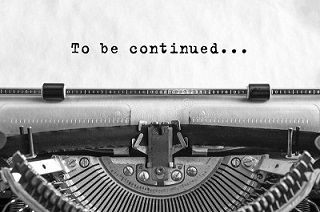
(The closing lines from Walden, Henry David Thoreau)
So what am I trying to say here? – only that radionics is a creature that seems to live while I live, as easily believable as great literature or philosophy, and arguably just as important as any other work of originality. The same sense of reality is cultivated by reading great works as when I contemplate my radionic creation – valid, relevant, alongside and parallel to the world while intersecting it, equal in their existence. Is it really Chuang-tzu dreaming of a butterfly, or is the butterfly dreaming of Chuang-tzu? Both, perhaps, are true.
The Buddha asserted that everything is mind. Who am I to argue? I believe that the mind literally creates what is commonly understood as reality. Perception is projection. Within consciousness the perception of both tangible or imaginary realities is non-different. A radionics instrument works at the same level as it is conceived. In that reality a book can change your life. Radionics may also.
Explore. Enjoy the journey.
I’d love to hear your thoughts on this. Please join the conversation and leave a note in the comments section below.


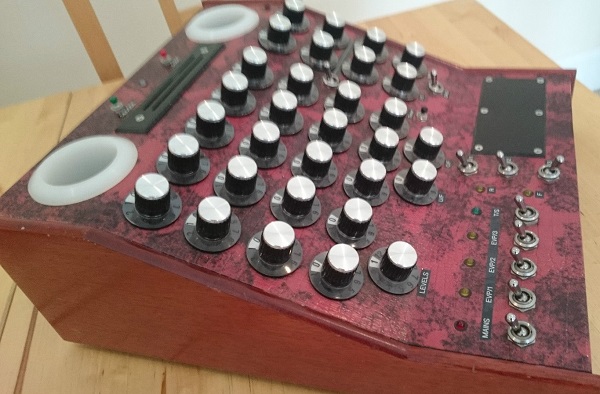

Excellent post on Radionics, I would like to use it on my blog if that’s ok.
Thanks. Replied by email.
Dear Geoffrey, it is a pleasure to read your write-ups! A nice blend of both right brain and left brain thinking goes into your writing: I can not stop reading half way! Want to read more and more. Can not put down until I finish it!
Simply love your writings!
Thank you for your kind words! I am grateful that you enjoy my work. 🙂
I just found your site from Radionicsspectro.com. I’m going to have to explore this, looks good. I’m always looking for a good site about radionics. Great post.
This is a very good and informative site. I like the depth of the posts and the readers commentary. Would you mind if I linked it on my website? I have a resources page for books, videos and links relating to radionics.
Glad you are enjoying it! You’re welcome to link to this site. Thanks.
I’ve often enjoyed your short treatises on radionics. I enjoyed this more philosophical article very much and agree with how you look at it. I had some friends over and they asked about a wishing machine I had made just for a lark. I had given it a whirl on several hibiscus plants I own that were under constant attack by aphids. I used the machine to wish them healthy and free of aphids. The aphids have been gone for over a year now and the plants are more healthy than ever. I explained to my friends that a wishing machine amplifies my intentions. They seemed to think this was – reservedly – an okay thing.
Thanks for sharing, and I’m happy that you enjoyed the article!
As children we played with cardboards. We painted spaceship instruments, buttons, knobs, levels, and we pretended to be “very scientific” when we pushed one of these buttons. At some point I got the feeling that each single act in this “simulated spaceship” was important. This may be regarded in psychology as “magical thinking”, but if you observe almost all adults, they care for traditions and rituals, as if something very important would depend on it.
And maybe art is a kind of radionics. A painter enters an altered state of consciousness while they are in “the flow” and the observer of the art may come into contact with exactly the same morphic field the painter linked to its artwork. We feel their intention. It is not only about color and form, but also the more subtle levels of collective consciousness.
Indeed. I feel deeply that Mythology and “magical thinking” are important so that we don’t lose touch with meaning and purpose in life. They are what make us truly Human and at the same time elevates us to a higher, more Divine, understanding of our place in the Cosmos.
And thanks for your good work! 🙂
Geoffrey, if ever there was a ‘heart and soul’ Radionics Manifesto… this is most certainly it.
Simply superb in its execution!
Glad you appreciated it! 🙂
So glad I stumbled on your blog – have learnt a lot. Until I came across your blog, I despaired at ever being able to make sense of radionics. Love the way you make it so comprehensible to novices like me as also your philosphical musings and how unapolgetically unconventional you are.More strength to you
Humbled. I’ll accept “unapologetically unconventional” as a compliment.